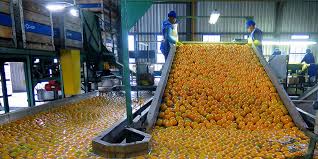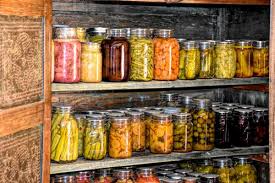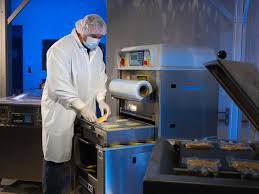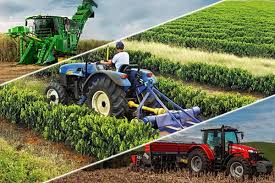Agricultural product transformation refers to the process of converting raw agricultural products into forms that are easier to consume, store, or market. This transformation can involve basic changes like cleaning and drying, or more advanced methods like milling, fermenting, or canning.
By transforming these products, farmers and processors can add value, improve food safety, and meet consumer demands more effectively. Agricultural product transformation is essential for increasing the shelf life of food, reducing waste, and enhancing the quality of goods sold in local and international markets.
Importance of Transforming Agricultural Products
The transformation of agricultural products is vital for several reasons:
1. Extending Shelf Life: Many agricultural products, such as fruits, vegetables, and dairy, are highly perishable. Transforming these products through methods like drying, freezing, or canning helps to preserve them for longer periods.
2. Reducing Post-Harvest Losses: Post-harvest losses are a major concern in agriculture, particularly in regions where storage and transportation are limited. Processing helps reduce these losses by converting raw produce into more stable forms.
3. Improving Food Safety: Transforming agricultural products ensures that harmful pathogens and contaminants are eliminated, improving food safety for consumers.
4. Enhancing Market Value: By transforming raw agricultural products into processed goods like flour, oils, or packaged foods, farmers and processors can command higher prices and reach larger markets.
5. Supporting Economic Development: Value-added processing creates employment opportunities, stimulates local economies, and contributes to the growth of rural communities.
6. Diversifying Diets: Processed agricultural products often offer new food options, making it easier for people to access diverse and nutritious meals.
Primary Processing Methods

Primary processing involves the initial transformation of raw agricultural products into forms that are more stable or easier to handle. These methods are typically simple and focus on cleaning, sorting, and preserving the product in its natural state.
1. Cleaning: Raw agricultural products often contain dirt, dust, and foreign materials that need to be removed before they can be consumed or further processed. Cleaning methods include washing, brushing, and air blowing to ensure a high-quality product.
2. Drying: Drying reduces the moisture content of agricultural products like grains, fruits, and herbs, making them less prone to spoilage. This process can be done using sunlight or mechanical dryers, depending on the product and available resources.
3. Sorting and Grading: Agricultural products are sorted and graded based on their size, color, and quality. This ensures uniformity and consistency in the market, which is essential for consumer satisfaction.
4. Milling: Milling is commonly used for grains like wheat, rice, and corn. The raw grain is ground into flour or meal, making it easier to cook or further process into different food products.
5. Peeling and Shelling: Peeling or shelling is often used for fruits, nuts, and seeds. This process involves removing the outer layers to improve the appearance and make the product ready for consumption or further processing.
6. Refrigeration: Refrigeration is a primary method of preserving perishable agricultural products like dairy, meat, and fresh produce. Cooling reduces the growth of microorganisms, slowing spoilage.
Secondary Processing Techniques
Secondary processing takes agricultural products through more complex transformations to create new food products or increase their market value. These techniques involve chemical, physical, or biological changes to the raw materials.
1. Fermentation: Fermentation is used in the production of foods like yogurt, cheese, beer, and sauerkraut. This process relies on microorganisms like bacteria and yeast to break down sugars, creating new flavors and textures. Fermentation also helps preserve the food and enhances its nutritional value.
2. Canning: Canning involves placing food in airtight containers and heating them to kill harmful microorganisms. This method is widely used for fruits, vegetables, and meats, allowing them to be stored at room temperature for long periods.
3. Freezing: Freezing agricultural products like vegetables, meat, and fish halts the growth of microorganisms and preserves their texture, flavor, and nutritional value. Freezing is one of the most common preservation techniques used in secondary processing.
4. Pasteurization: Pasteurization is a heat treatment process used for dairy products, juices, and other liquids. It kills harmful bacteria without significantly affecting the taste or nutritional quality of the product.
5. Baking and Cooking: Many agricultural products, such as grains and vegetables, undergo cooking or baking to become finished food products like bread, pasta, and canned soups. Cooking often involves mixing ingredients and applying heat to achieve the desired texture and taste.
6. Extraction: Oils are extracted from seeds, nuts, and fruits through pressing or chemical extraction. This process is used for products like sunflower oil, olive oil, and essential oils.
7. Grinding and Pulverizing: Secondary processing often involves grinding or pulverizing agricultural products into powders or smaller particles. This method is used to produce flour, spices, and powdered food products.
Read Also: Importance of a Sick Bay in a Ruminant House
Preservation Techniques for Agricultural Products

Preservation is a critical part of transforming agricultural products, as it helps extend shelf life and maintain quality. Several methods are used to preserve food and other agricultural products effectively.
1. Drying: As a simple yet effective preservation technique, drying removes moisture, which inhibits the growth of spoilage-causing microorganisms. Products like dried fruits, grains, and herbs are preserved using this method.
2. Freezing: Freezing is one of the most efficient preservation methods, especially for meat, fish, and vegetables. It retains the food’s original taste and texture while significantly extending its shelf life.
3. Canning: Canning is a reliable method for preserving food without refrigeration. It involves heating food in sealed jars or cans to kill bacteria, enabling storage for months or even years.
4. Smoking: Smoking is a traditional preservation technique for meat and fish. The smoke from burning wood dehydrates the food and infuses it with a smoky flavor, while the heat from the process kills bacteria.
5. Vacuum Sealing: This method involves removing air from a package before sealing it. Without oxygen, the growth of bacteria and fungi is slowed down, making it a useful technique for preserving meats, cheese, and processed grains.
6. Pickling and Salting: Pickling involves soaking food in an acidic solution like vinegar, while salting draws out moisture from food. Both methods are commonly used to preserve vegetables, meat, and fish.
7. Irradiation: Food irradiation exposes products to low doses of radiation to kill bacteria and other pathogens. This modern technique is especially useful for meat, spices, and fruits.
Packaging Methods in Agricultural Processing
Packaging is a critical step in agricultural processing as it preserves the quality and extends the shelf life of products. Various packaging methods are used depending on the product type, the market, and transportation needs.
1. Vacuum Packaging: In vacuum packaging, air is removed from the packaging before sealing, which helps prevent spoilage caused by bacteria and fungi. It is commonly used for meats, cheese, and dried products like coffee and nuts.
2. Aseptic Packaging: This method sterilizes both the food and the packaging separately before sealing them together. It is widely used for dairy products, juices, and soups, enabling products to be stored at room temperature for long periods.
3. Modified Atmosphere Packaging (MAP): MAP alters the atmosphere inside the packaging, replacing oxygen with gases like carbon dioxide or nitrogen to slow down spoilage. This method is used for fresh fruits, vegetables, and meat products.
4. Biodegradable Packaging: With increasing concern for environmental sustainability, biodegradable packaging made from materials like plant fibers and compostable plastics is gaining popularity. It reduces plastic waste and is suitable for a variety of agricultural products.
5. Canning: Canning involves sealing food in airtight metal or glass containers and then heating them to kill bacteria. This method is common for fruits, vegetables, meats, and ready-to-eat meals.
6. Freezing Packaging: Agricultural products like vegetables, fish, and meat are often frozen and packaged in moisture-proof materials to maintain freshness and prevent freezer burn during storage and transport.
Value Addition through Processing
Value addition refers to the process of enhancing the market value of raw agricultural products through various forms of processing. This not only benefits farmers but also boosts the overall agricultural economy.
1. Processing Raw Products: Turning raw produce into processed goods like jams, juices, oils, and snacks adds value to the products, making them more appealing to consumers and increasing profitability.
2. Enhancing Nutritional Content: Processing techniques like fortification can be used to enrich food products with essential nutrients such as vitamins and minerals, adding value by improving their health benefits.
3. Developing New Products: Innovation in agricultural processing allows for the creation of entirely new products from traditional crops. For instance, plant-based proteins derived from soy or peas are increasingly popular in global markets.
4. Branding and Packaging: Effective branding and attractive packaging can significantly increase a product’s market value by appealing to consumer preferences and trends such as eco-friendliness or health-consciousness.
5. Reducing Post-Harvest Losses: Processing raw agricultural products helps reduce losses during transportation and storage, ensuring that farmers get the most out of their harvest.
Read Also: Stocking Management for Ruminant Animals
Role of Technology in Agricultural Product Transformation

Technological advancements have revolutionized agricultural product transformation, improving efficiency, product quality, and food safety.
1. Automation in Processing: Automated machines and robotics are increasingly used in processing plants for tasks like sorting, grading, and packaging, reducing labor costs and minimizing human error.
2. Precision Processing: Sensors and data analytics are utilized to monitor the quality and condition of agricultural products throughout the processing phase. This ensures that products are processed at the optimal time and conditions for maximum quality.
3. Food Preservation Technologies: Innovations such as high-pressure processing (HPP) and pulsed electric fields (PEF) allow for the preservation of food without the use of chemicals, maintaining flavor and nutritional content while extending shelf life.
4. Biotechnology: Genetic engineering and fermentation processes are used to develop new food products and enhance the nutritional value of existing ones. For example, probiotics added to dairy products can improve gut health.
5. Supply Chain Management: Advanced software solutions and blockchain technology improve traceability and transparency in the agricultural supply chain, ensuring that products are handled properly from farm to consumer.
6. Sustainable Practices: Technology also plays a role in promoting sustainable practices, such as the development of energy-efficient processing methods and the use of by-products in creating new goods, thereby minimizing waste.
Challenges in Transforming Agricultural Products
While there are numerous benefits to transforming agricultural products, several challenges must be addressed to maximize success in this area.
1. Access to Technology: Small-scale farmers often struggle to access advanced processing technology due to high costs, limiting their ability to add value to their products.
2. Market Competition: The market for processed agricultural products is competitive. Farmers and processors must constantly innovate and differentiate their products to attract consumers and remain profitable.
3. Regulatory Compliance: Complying with food safety regulations and standards can be complex and costly, particularly for small producers who may lack the resources to navigate these requirements effectively.
4. Infrastructure Limitations: In many regions, inadequate infrastructure for transportation, storage, and processing can hinder product transformation and market access.
5. Consumer Preferences: Shifts in consumer demand, such as the preference for organic or locally sourced products, can challenge traditional processing practices, requiring producers to adapt quickly to changing market trends.
6. Environmental Concerns: The transformation of agricultural products can sometimes lead to negative environmental impacts, such as increased waste or energy consumption. Sustainable practices need to be integrated into processing methods to mitigate these effects.
Future Trends in Agricultural Product Transformation
The agricultural sector is constantly evolving, and several trends are emerging in product transformation that can shape its future.
1. Increased Demand for Plant-Based Products: As more consumers shift toward plant-based diets, there will be a growing need for innovative processing techniques to create high-quality alternatives to meat and dairy products.
2. Emphasis on Sustainable Practices: Future processing methods will likely focus more on sustainability, including waste reduction, energy efficiency, and the use of renewable resources in production processes.
3. Enhanced Food Safety Measures: With rising consumer awareness about food safety, technologies that enhance traceability, such as blockchain and IoT, will become increasingly important in the processing of agricultural products.
4. Customized Nutrition: Advances in biotechnology will allow for the development of food products tailored to specific nutritional needs or preferences, offering opportunities for personalized nutrition solutions.
5. Growth of E-commerce: The rise of online grocery shopping will impact how agricultural products are processed and marketed, requiring more direct-to-consumer strategies and innovative packaging solutions to enhance delivery efficiency.
6. Integration of Artificial Intelligence (AI): AI technologies will continue to improve decision-making in processing, from predicting demand to optimizing production schedules, leading to increased efficiency and reduced waste.
Agricultural product transformation plays a vital role in preserving the quality, safety, and marketability of raw materials. Through primary and secondary processing techniques, farmers and producers can add value to their products, reduce post-harvest losses, and meet consumer demands. Preservation methods, such as drying, freezing, and canning, ensure that agricultural products remain safe for consumption over extended periods.
As technology and innovation continue to improve processing methods, agricultural transformation will play an increasingly important role in food security, economic development, and sustainability.
Do you have any questions, suggestions, or contributions? If so, please feel free to use the comment box below to share your thoughts. We also encourage you to kindly share this information with others who might benefit from it. Since we can’t reach everyone at once, we truly appreciate your help in spreading the word. Thank you so much for your support and for sharing!
Read Also: The Impact of Inefficient Waste Management on Oceans
Frequently Asked Questions
We will update this section soon.

